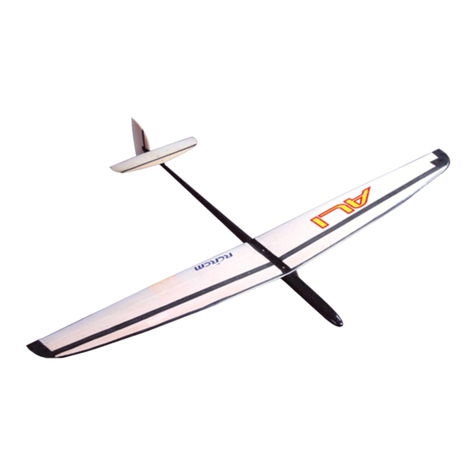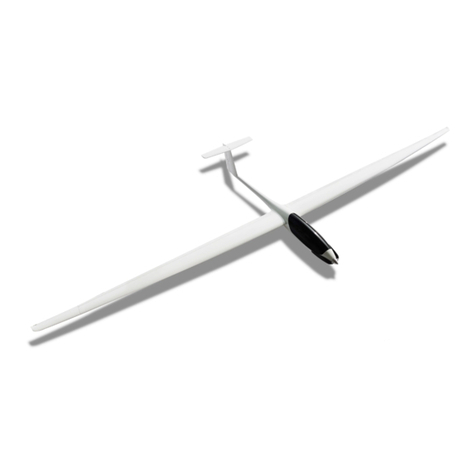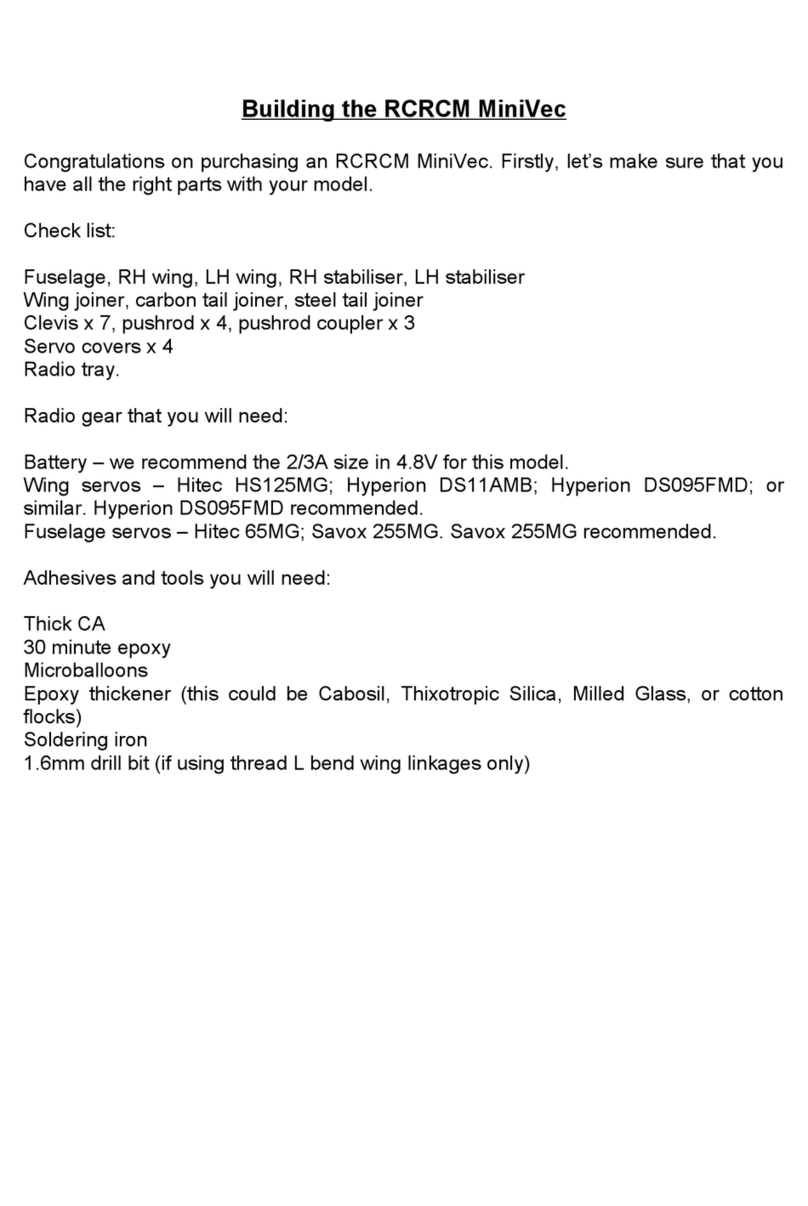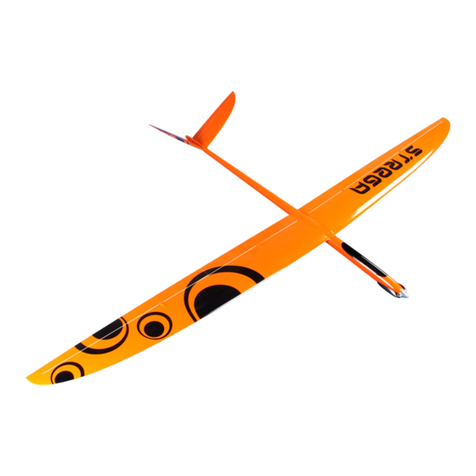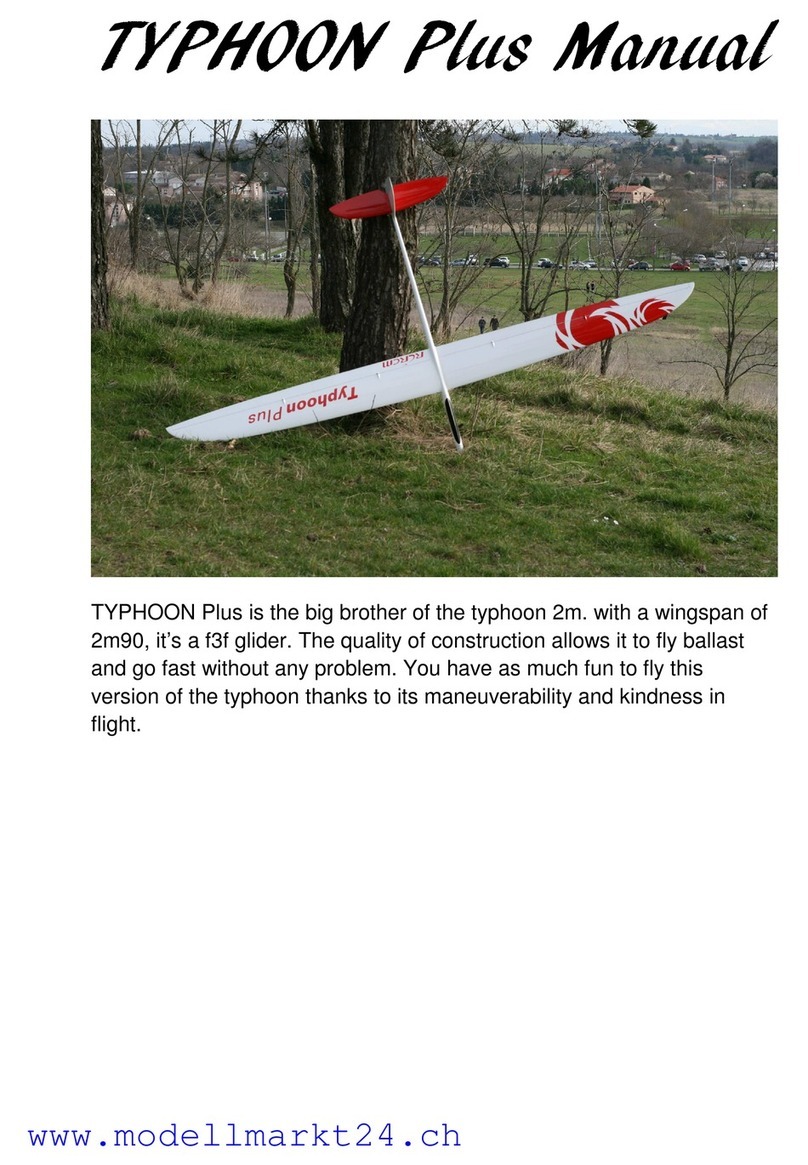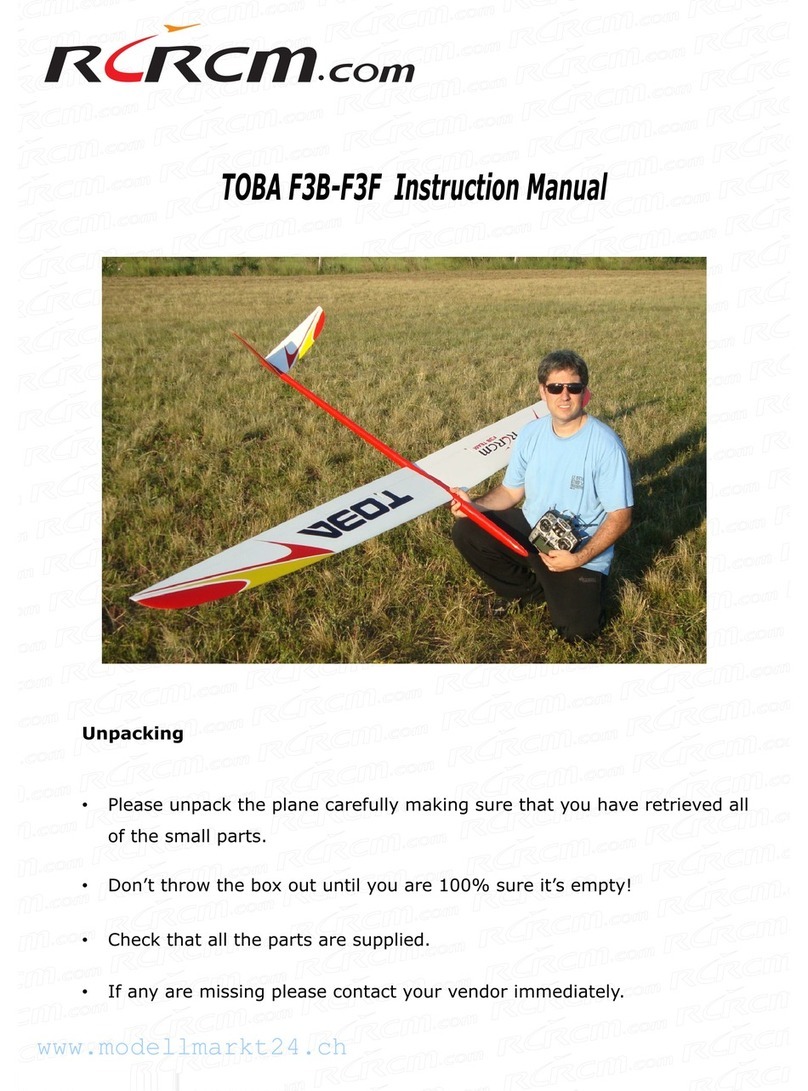Servos
I went with emax ES09D plastic geared sevos for the wing and rudder. They are dual bearing,
2.2Kg/cm at 4.8v, weighing 11.6g each. This range of servos was designed specifically for 450
helis swash plates where holding power and centering are key characteristics. They would fit in
the wing hard on the top skin without the supplied plywood servo mounts.
Foot Note :-After having seen and flown the plane I would recommend metal geared servos, especially for the flaps that
are prone to damage in a careless landing.
Fully flying horizontal stabilisers need the biggest, badest, servo that can be fitted in regardless of
the design speed. Centering and holding must be brutal and repeatable if the glider is going to be
capable of always flying at the speed selected by the mode switch. When flying at the extremity
of line-of-sight, especially in a breeze, the pilot must have total confidence in the glider trim
producing the desired air speed. I chose an Hyperion Atlas DS-13tmb for this job. It weighs
19.2g, is capable of 3.6Kg/cm at 4.8v and is programmable so control throws etc can be very finely
tuned without loss of power.
Initial CG Balance Test
The first build activity is to verify the target CG position is attainable with components selected.
Tape all the components that will be going into the glider in their respective positions and try a CG
test. At this early stage it is not necessary to be totally accurate, the objective being to verify that
motor and LiPo choices made are practical. The target supplied by RCRCM was 73.5mm back
from the leading edge, my model balanced at 77mm back indicating I need more weight forward.
This was not unexpected given I was working on a minimum power implementation. It showed
me that tail weight will be critical and I must make it as light as possible. This theme would prevail
throughout the build. I really dislike adding ballast to make the CG target.
Radio Preparation
Open a new model on the radio to be used, select a normal tail and a 4 servo wing configuration.
Zero all the trims and subtrims. Install the ESC and servos in the respective ports on the receiver
and power it up on the bench. This will center all the servos in preparation for setting up control
rod lengths etc. Be careful not to move the servo arm position once this is done.
Firewall and Motor
There is a nice fibreglass fire wall supplied that has to be firmly fixed in the glider nose. The
firewall angle determines the motor angle that has a bearing on performance and trim under power.
I like about 2-3 deg of down thrust and 1-2 deg of right thrust to counteract the propeller effects.
Getting the firewall into the glider in the correct position is important so I made up a wooden prod
that tightly fitted the center hole. This would be a guide for installation of the firewall.






